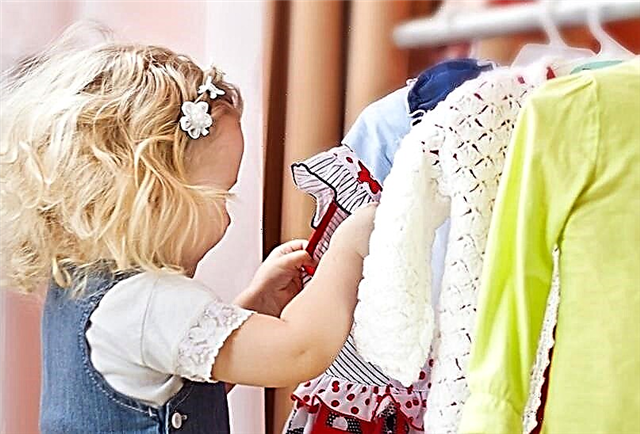Many people are surprised to learn that hernias are quite common in children. Babies (especially premature babies) may even be born with a hernia. An inguinal hernia in babies is treated, because it is a common operation performed for children. But it is important to see her symptoms in time so that you can provide your child with appropriate medical care.
What is a hernia?
A hernia forms when a part of an organ or tissue in the body (for example, a loop of the intestine) protrudes through a hole or a weakened area in the muscle wall, begins to protrude into a space where it should not be. This protrusion is a hernia, which looks like a strand or a lump.
Some anatomical structures that function in utero and overgrow after birth do not have time to close. And babies are born with various small holes inside the body. Nearby tissues can invade such structures, forming a hernia.
Unlike hernias found in adults, these areas are not always considered a weak area in the muscle wall. This is a normal, healthy part of the body that has not yet managed to go through all the stages of its extrauterine development.
Sometimes tissues can be squeezed in the anatomical openings of the muscle wall, which are intended only for the passage of arteries or nerve trunks there. In other cases, stress or injury weakens or thinns a specific area in the muscle wall. And if any organ or part of it is in this place, then the pressure created by it can also form a hernial protrusion.
Inguinal hernia
An inguinal hernia is an abnormal bulge that can be seen and felt in the groin area - the area between the abdomen and the thighs. An inguinal hernia in children appears when part of the intestine, along with its contents, rushes through the thickness of the muscle of the abdominal wall.
Causes
Between 12-14 weeks of fetal development, testes form in the abdomen near the kidneys. As the baby develops in utero, they gradually move down to the lower abdomen. Before birth, the testicles are pushed through a hole in the tissues between the belly and groin and descend into the scrotum.
 A similar process occurs in girls - the ovaries descend into the pelvis. After this, the opening in the abdominal wall is closed. This removes any connection between the abdomen and the scrotum or groin.
A similar process occurs in girls - the ovaries descend into the pelvis. After this, the opening in the abdominal wall is closed. This removes any connection between the abdomen and the scrotum or groin.
If this canal does not close completely, and the muscles in the abdominal wall do not close the opening well enough, a hernia may develop.
Inguinal hernia in children occurs at any age, but the maximum incidence is observed in infancy and up to 5 years, from 80 - 90% in boys.
About 3 - 5% of healthy, full-fledged babies can be born with an inguinal hernia, and a third of infant and child hernias appear in the first six months. In premature babies, the incidence of inguinal hernia increases significantly, up to 30%. In more than 10% of cases, other family members also had a hernia at birth or in infancy.
Right lateral hernias are more common than left ones.
Inguinal-scrotal hernia occurs only in boys, while the testicle is compressed, which leads to infertility in the man in the future. Inguinal-scrotal hernia in children is subdivided into testicular and cordlike.
Symptoms
A hernia in an infant or older child will look like a bulge or swelling in the groin area. Sometimes, an inguinal hernia in newborn boys can manifest as swelling in the scrotum.
 In many cases, swelling can only be observed when crying or coughing. Because of this, parents often assume that crying is caused by a hernia, while most often this ailment in crumbs occurs due to crying for a completely different reason.
In many cases, swelling can only be observed when crying or coughing. Because of this, parents often assume that crying is caused by a hernia, while most often this ailment in crumbs occurs due to crying for a completely different reason.
In girls, it is much less common to have an inguinal hernia, but sometimes it does. In this case, the ovaries or bowel loop pushes the abdominal wall into the groin area, and sometimes even down to the labia majora.
The protrusion will feel like a solid elongated strand.
Generalized swelling in the labia immediately after birth is more likely to be caused by excess fluid in the newborn or an extra dose of hormones received from the mother shortly before birth. This swelling is harmless and disappears after a few days.
What can be confused with a hernia?
Other conditions that may look like an inguinal hernia but are not.
- A communicating hydrocele is similar to a hernia, except that fluid forms a bulge in the scrotum rather than protruding tissue. In some cases, the size of the scrotum changes depending on how much fluid goes in and out.
- Sometimes a retractable testicle (which occasionally rises from the scrotum up the canal) causes a bulge in the groin area. It may not need treatment, but the condition should be assessed by a specialist.
- A femoral hernia is rare in children and can be confused with an inguinal hernia. A hernia appears as a bulge in the upper thigh, just below the groin.
Complication of an untreated hernia
An inguinal hernia in children tends to get stuck, meaning the lump does not disappear when the child relaxes. This is called infringement.
Infringement occurs quite often.
Symptoms may include the following:
- the child looks sick;
- groin pain;
- nausea and vomiting;
- enlarged belly;
- fever;
- edema that appears red and is noticeably tender to the touch;
- swelling that does not change in size when you cry.
If tissue gets stuck, eventually a full blood supply will not be ensured. Without a good blood supply, the organ can die. It can be life threatening.
Diagnostics
If you think your baby has an inguinal hernia, see your doctor. Diagnosis is carried out through a thorough examination of the medical history and close physical examination. If the hernia is not visible during the visit, the doctor will try to identify it by lightly pressing on the baby's abdomen.

No additional tests are usually required to diagnose a hernia.
Treatment
Inguinal hernias require surgery, and surgery is performed as soon as possible to avoid the risk of pinching the abdominal organs.
If there is an inguinal hernia, treatment without surgery will be ineffective. Surgical removal of a hernia is the only effective method.
Sometimes doctors recommend that children wear a bandage. This medical procedure is prescribed when surgery is contraindicated.
Contraindications to hernia repair:
- the body is severely depleted;
- there are accompanying severe conditions.
The size and type of bandage is selected strictly individually, depending on the location of the hernia. The bandage is not able to eliminate the hernia. It only prevents the infringement of the hernia and protects from the complete loss of organs into the resulting bag.
Surgery to remove an inguinal hernia in children is necessary in all cases, even if the hernia has not yet been pinched. A child should not eat for 6 hours before surgery to reduce the risk of vomiting and aspiration (inhalation of fluids or vomit) during anesthesia.
During the operation
- An anesthesiologist (a doctor who specializes in pain relief) gives the child general anesthesia, which relaxes the child's muscles and induces sleep. The child will not feel pain during the operation.
- A small incision (2 to 3 cm) is made in the skin fold of the groin.
- The hernial sac containing the small intestine is determined.
- The surgeon pushes the intestines into the hernial sac back into the abdominal cavity, into the correct position behind the muscular wall.
- The empty hernial sac is removed.
- The muscle wall is secured with sutures to prevent another hernia.
- If the child is younger than 1 year old, the chances of a hernia developing on the other side of the groin are very high. Therefore, groin correction is recommended. If there is currently no hernia on the other side of the groin area, the muscle wall is reinforced with stitches.

For an inguinal hernia in children, surgery is usually very simple. However, babies may have difficulties. In boys, the muscle opening is very close to the vessels and cords that are connected to the testicle.
A hernia can damage these blood vessels, especially if it is pinched before surgery, but the surgeon must also be careful to protect the vessels.
- there is a small risk of trauma to the testicular blood vessel. This leads to poor growth, or even loss of the testicle;
- an infection of the wound can occur, causing redness and pus a few days after surgery. In this case, antibiotics will be required;
- Bruises at the site of hernia repair are quite noticeable, but by themselves they rarely cause swelling. The swelling usually goes away after a few days;
- rarely, the hernia returns, and then there is a need for a second operation. It can even happen a day or two after surgery.
Most children will be able to return home a few hours after surgery. However, premature babies and children with certain medical conditions will have to spend one night in the hospital for observation.
Baby care after surgery
Usually in the evening after surgery and the next morning, the child feels well. There is no set time for your baby to return to normal activities. An older child should focus on their comfort and pain. However, it is recommended not to exercise for several weeks.
You can wipe your baby with a sponge soaked in water after surgery the next day. Bathing in the bath is allowed 2 days after the surgery.
If there is any redness or discharge from the wound, seek medical attention. You can give your child Paracetamol as directed every six hours for 24 to 48 hours.
Forecast
The forecast is favorable. If a child's inguinal hernia is surgically removed, it is unlikely that it will recur. Hernia recurrence occurs somewhat more often if there is any damage to the intestine.



